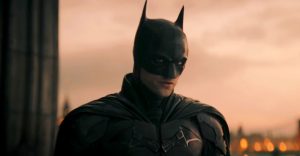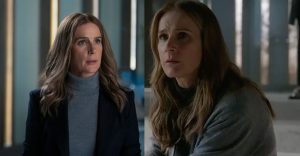10 Movies That Heavily Use Old Footage From Previous Films

The Unbearable Weight of Massive Talent is one of the biggest surprise successes of the year, as it hilariously sees Nicolas Cage playing himself in a movie that is both a homage to and a parody of his best films, and it features a lot of footage of his older work. The movie isn’t afraid to use his older movies liberally, as it even opens with a couple watching and loving the classic Con Air.
However, the 2022 release isn’t the first movie to use footage of older movies in interesting and creative ways, and as movies continue to become more meta, it probably won’t be the last either. Between repurposed footage being the whole plot twist of a movie and making for tearjerking montages, some of these movies’ most important sequences are made up of old clips.
The Godfather Part III (1990)
The Godfather Part III uses so much footage from the previous two movies, and, ironically, they’re the best parts of the film. However, that isn’t because Part III is bad but because of how director Francis Ford Coppola repurposes them. It’s rather telling that after the major overhaul and re-edit of The Godfather Part III, which was renamed The Godfather Coda: The Death of Michael Corleone and released in 2020, the old footage was still left in there.
The footage is instrumental when it comes to making audiences empathize with Michael, who had a redemption arc in the movie even though many fans thought he didn’t deserve it. And the montage right before it cuts to Michael’s death, which is made up of the happiest moments in his life that were seen in the previous two movies, is absolutely heartwrenching.
The Matrix Resurrections (2022)
Despite fans having millions of theories on where it could have gone, The Matrix Resurrections took the Matrix franchise in a direction that nobody predicted. The fourquel was a meta look at the series, and in doing so it featured so much footage of the original movie. And even when footage of the original isn’t being shown, Morpheus is doing impressions of his 1999 self.
However, it might have had a reverse effect to what writer-director Lana Wachowski intended, as it probably reminded viewers of how great the original was and they’d much rather have been watching the 1999 movie than Resurrections. The Matrix Resurrections‘ over-the-top self-awareness just didn’t work for the movie.
Top Gun: Maverick (2022)
The excitement and success of the second Top Gun movie has led to fans wanting so many more ’80s legacy sequels. But the 2022 film was like lightning in a bottle, and the way it emotionally brings back the older characters is way more than simple fan service. The sequel reintroduces Iceman in a way that will have both grown adults and people who had never seen the original in tears.
But it might not have been as effective if it didn’t feature so much footage of Goose and Iceman at the bar from the original movie. However, the movie was so full of photos of the old pilots that it feels like there’s much more footage from the original movie than there actually is.
Halloween Kills (2021)
Halloween Kills is one of the most disappointing sequels in recent memory, as critics tore it apart for being almost a parody of the film it followed, the surprisingly great reboot, 2018’s Halloween. However, the sequel still does a lot right, and it perfectly features old footage of 1981s Halloween 2. Not only is it great fan service, but it also wraps up an old Michael Myers mystery too.
Like Avengers: Endgame, Halloween Kills seamlessly mixes old footage with flashbacks to 40 years ago, and it brilliantly explains how Myers survived after being shot six times. Hopefully, the upcoming Halloween Ends can close out the new trilogy on a high note with more clever screenwriting like this and fewer “Evil dies tonight!” chants.
Avengers: Endgame (2019)
Avengers: Endgame is one of the most accomplished movies ever made, and regardless of whether or not people like it, there’s no denying that the way it effortlessly wraps up a 20-plus-movie saga is impressive. It was pulled off with time travel, and the movie revisits other older entries in the MCU.
The film cleverly features tons of footage from films like The Avengers and Guardians of the Galaxy, such as the Battle of New York and Star-Lord singing into a lizard, but directing duo the Russo brothers also shot more footage that resembles those eras. The result is seamless, and even though fans know which footage is new because of the context, based on the way it looks, it’s impossible to tell.
Blade Runner 2049 (2017)
Blade Runner is a sci-fi cult classic in every way, and even though Blade Runner 2049 bombed at the box office, as it only made $260 million, which wasn’t enough to cover its budget and marketing costs, it’s still a tremendous sequel. Blade Runner 2049 surprisingly answers what had been a mystery for decades, whether or not Deckard is a replicant, and in doing so it flashes back to scenes from the original film.
Rachel (Sean Young) often pops up on the screen, but the sequel takes it even further when she’s recreated in the uncanny valley. A completely digital version of Young, which looks exactly like Rachel from the first film, appears in the final act, and it’s the best example of the uncanny valley in cinema and frighteningly realistic.
Blade Runner: The Director’s Cut (1992)
While it’s less obvious than it is in Blade Runner 2049, the original Ridley Scott-directed movie also uses footage from an older film. Interestingly, the footage is the most important scene in the movie, as the film’s entire mystery revolves around it. In the original Blade Runner, Deckard is handed unicorn origami, which doesn’t mean all that much.
But in Blade Runner: The Director’s Cut, which is generally considered the superior version of the film, it features the actual dream of the unicorn. That dream sequence changes the entire way fans perceive the film, but it’s repurposed footage of one of Scott’s lesser-known movies, Legend. But some could theorize that Scott connivingly shot the footage with the intention of using it for a Blade Runner edit.
Cinema Paradiso (1988)
Cinema Paradiso is one of the highest-rated movies on IMDb, and that’s because of how heartfelt and uplifting it is. It creatively uses footage of older movies to tug on viewers’ heartstrings, as it features a montage of people kissing from an array of black-and-white movies. While that doesn’t sound all that emotional, it’s all about context.
Cinema Paradiso is about an Italian movie projectionist who was forced to cut out all the love scenes from movies that he screened. But he spliced them together onto one reel, and it’s the lasting memory of him after he dies. The movie is a beautiful emotional rollercoaster and a celebration of life, and it all hinges on that expertly cut montage.
The Saw Franchise
The whole Saw series is a complete mess that’s full of movies that repurpose footage from the previous films, and it’s used to retcon and contradict the narratives. It started out as being fairly clever, as Saw II reused footage of Amanda in the first movie but added more scenes, which led to the shocking twist that she was in fact John Kramer’s apprentice.
However, each consecutive movie in the series took it further and further to the point where the franchise is full of plot holes. Hopefully, the upcoming Saw 10 will be more of a reset, and bring the series back to basics instead of ruining the couple of great films in the series.
Austin Powers In Goldmember (2002)
In Austin Powers in Goldmember, there is a flashback that features Powers’ father, Nigel Powers (Michael Caine). Michael Caine looks 30 years younger, but 2002 was way before the uncanny valley was a thing. It was pulled off by using footage from the 1967 movie Hurry Sundown, which stars Caine. It worked perfectly, as very few people had ever seen the movie, and the footage was seamlessly spliced into the 2002 release.
Goldmember is lowkey an incredible experiment and look at filmmaking, as not only does it cleverly repurpose an almost unheard-of 1967 movie, but it has one of the greatest fictional movies within a movie ever too. The iconic opening sees the real-life Steven Spielberg shooting a movie based on Austin’s life with Tom Cruise in the lead role.



























